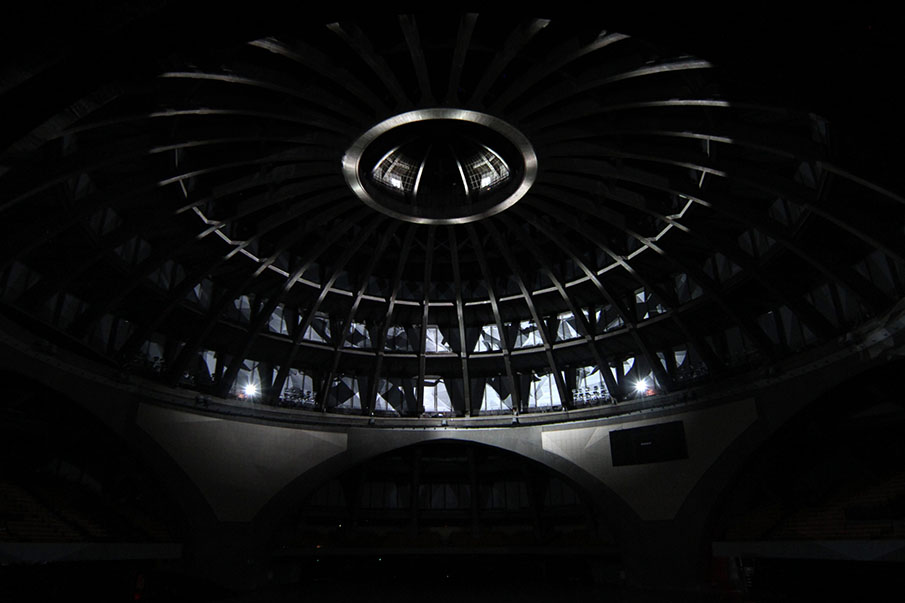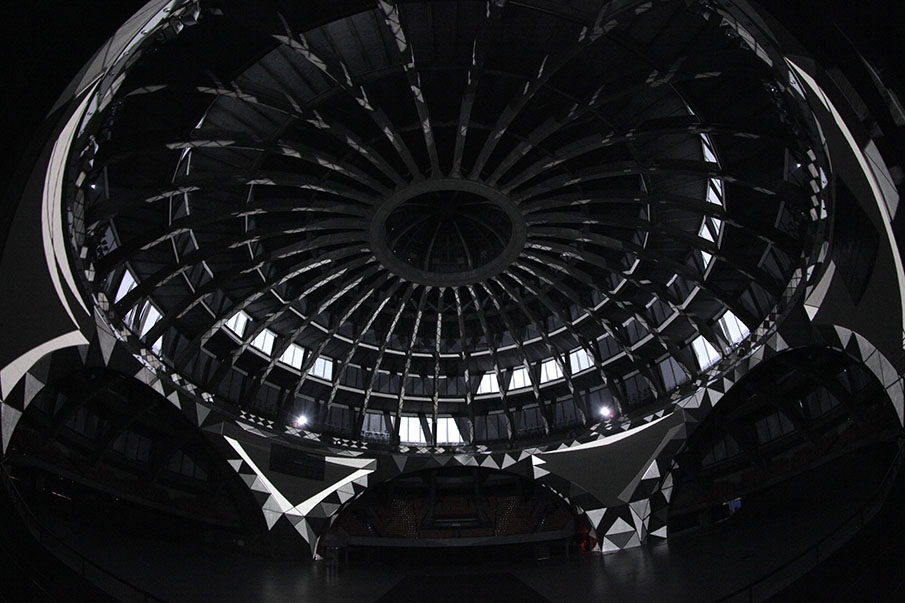O (Omicron)
A permanent audiovisual installation by Romain Tardy & Thomas Vaquié
Music composed by Thomas Vaquié
Role: Conception (w/ Thomas Vaquié), creative direction, animation
Production: Nolabel
Coordination & project management: ANTIVJ
Hala Stulecia, Wroclaw, Poland, January 2012
O (Omicron) represents my inaugural permanent installation utilizing architectural projection. It has been specifically designed for the esteemed Museum of Architecture in Hala Stulecia, located in Wroclaw, Poland. Serving as the final part of the museum visit, this immersive mapping installation establishes a connection between the building's rich history and the contemporary era, breathing vibrant life into its imposing concrete structure.
Hala Stulecia, upon its inauguration, stood as the world's largest reinforced concrete structure. With an impressive diameter of 65 meters, it boasted the most significant dome constructed since Rome's Pantheon eighteen centuries earlier. In recognition of its architectural significance, the Centennial Hall was bestowed with the prestigious UNESCO World Heritage Site status in 2006.
It is plausible to contemplate Max Berg's vision for Hala Stulecia when it was erected in 1913. Did he aspire for his creation to withstand the test of time? How did he envision the aging of materials, the evolution of the surrounding urban landscape, and the changing demographics? The installation conceived for the Centennial Hall in Wroclaw revolves around the concept of timeless architecture and explores the notion of future throughout the 20th century.

Drawing inspiration from the 1910s, particularly the dome's construction in 1913, historical and artistic references are employed to unveil the architectural essence of the space—a quality that is both timeless and strikingly contemporary. Deliberately adopting a minimalist visual aesthetic, the installation accentuates the very essence of Hala Stulecia's dome, reaffirming its pivotal role within the piece. This minimalist approach also serves as an apt conduit for conveying the idea of the future at different points in time, ranging from anticipatory films of the 1920s and 1930s to more contemporary productions. However, these references extend beyond mere formality; they serve as a stark reminder of real moments in the building's history, cautioning us against the perils of idealized visions of the future.
Thomas Vaquié, the composer of the music accompanying this project, sought inspiration from both orchestral compositions, echoing the colossal scale of the architecture, and electronic textures that evoke the passage of time. The musical score aims to capture the evolution of the materials employed in constructing the dome structure, simulating their sonic aging.
By juxtaposing references such as Fritz Lang's "Metropolis" and the utopian projects of Archigram, we endeavor to create a vision of the future that transcends any specific time frame—a timeless future. This exploration allows us to contemplate the various visions of the future that have emerged throughout different epochs, prompting introspection on our own conceptions of time, progress, and the enduring power of architecture.






The piece:
The making of the piece: